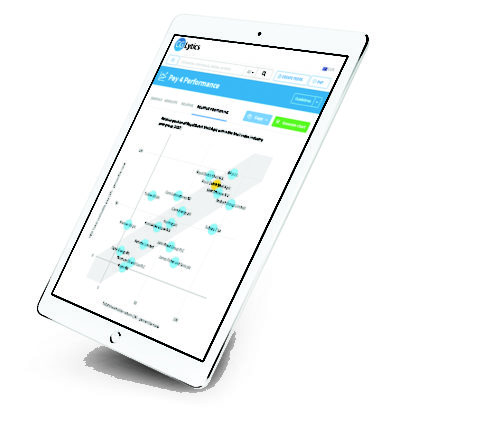In past decades, the CEO's pay wasn't always given much attention especially in regards to a company's performance. As cases of corporate fraud became public, shareholders began questioning the pay of CEOs and other high-ranking executives. Now that public companies are required to be more transparent about CEO pay and how it compares to what they pay the median employee, shareholders and others have all new sources of information with which to evaluate the equity of how companies pay their employees at all levels.
Much to the chagrin of many shareholders, they're finding out that huge salaries don't necessarily produce top performers. Offering a winning salary, in addition to stock equity and lots of fancy perks, is intended to motivate the CEO to work hard to ensure a top return on investment. As the results have fallen somewhere between not-so-great and poor, shareholders are rightly putting pressure on companies to bring CEO salaries in line with their performances.
When they looked at the 10% of companies that showed the best returns to their shareholders, their CEOs' pay ranked in the middle of the pay range. On the whole, CEOs who demonstrated an average performance were vastly overpaid while CEOs who produced some of the strongest returns to shareholders were underpaid in comparison with their peers.
Herman Aguinis is a professor of management at George Washington University School of Business who has studied CEO compensation issues extensively. Aguinis did a study of over 4,000 CEOs and their earnings over the course of their tenures, basing his analysis on several different performance metrics. Aguinis' results showed that there was no correlation between CEO pay and company performance of the top 15 CEOs and the top 1% of the highest salaries. When Aguinis looked at the top 10% of CEOs as rated on their performance, only 20% were in the top 10% for pay.
Aguinis' study also showed that out of 20 of the highest-paid CEOs who fulfilled the entire year in 2017, only two of them were in the top 20 for shareholder returns. As an example, Leslie Moonves is the CEO for CBS Corporation. Moonves received $69.3 million in 2016 and the total shareholder return was negative 6.2%.
Boards continue to struggle with how to compose remuneration packages in ways that truly incentivize top performance by their CEOs. As a starting point, boards typically look at what average companies of their peers are paying their CEOs as an initial benchmark and set their performance target accordingly.
This structure seems to work well when the CEO's performance doesn't veer too far from the average performer. While this type of structure works great in theory, the reality is that there are vast differences in the performance of CEOs, which is where we start to see the disparity between CEO pay and company performance.
In addition, board directors also tend to pay themselves similarly to CEOs by awarding themselves stock grants or other financial incentives that are tied to stock prices. On both accounts, high levels of compensation are only effective when they incentivize the right behavior. Some financial experts believe that offering stock-based incentives could have unintended consequences even when the incentives are modest. Such compensation plans have the potential to unfairly alter a CEO's judgment in favor of the shareholders.
In addition, incentives tend to be the most effective when CEOs can produce results immediately. Over time, some CEOs lose their steam in focusing on the longer-term incentives. The trend in paying CEOs in stocks is proving that CEOs focus more on short-term results so they can make their numbers. Obviously, this type of behavior does nothing to support the normal ups and downs that occur in the marketplace over long periods.
So, where do boards go from here? The general thought is that by closing up some of the disparity between top executives and the rest of the employees in a company, the overall health of the company will improve. The notion is that too much disparity impairs teamwork, reduces employee engagement and lessens creativity.
While the CEO plays one of the most important roles in the company, the health of a company depends on many more parts than just the CEO. A modern approach to governance considers that there may be better ways to look at CEO pay. Modern governance means looking at all the factors that lead to corporate success, including employee engagement and retention, customer service reviews and various measures of productivity.
It seems that the more we ask questions about the issues that drive CEO pay and performance, the more questions we need to ask. The best way for today's corporate boards to keep up with the multitude of changes occurring in the financial world is to make use of Diligent Boards and the suite of tools for modern governance offered in Governance Cloud. The entire premise of governance is evolving before our eyes and utilizing board management software is the best way to keep pace with the changes in the modern marketplace.
Much to the chagrin of many shareholders, they're finding out that huge salaries don't necessarily produce top performers. Offering a winning salary, in addition to stock equity and lots of fancy perks, is intended to motivate the CEO to work hard to ensure a top return on investment. As the results have fallen somewhere between not-so-great and poor, shareholders are rightly putting pressure on companies to bring CEO salaries in line with their performances.
Comparing CEO Pay with Shareholder Return on Investment
The statistics bear out the shareholders' concerns. The Wall Street Journal analyzed data from MyLogIQ and the Institutional Shareholder Services (ISS) in 2017. They found that of S&P CEOs who got pay raises in the prior year, about 10% of them sat merely in the middle of the group when comparing shareholder returns on investment.When they looked at the 10% of companies that showed the best returns to their shareholders, their CEOs' pay ranked in the middle of the pay range. On the whole, CEOs who demonstrated an average performance were vastly overpaid while CEOs who produced some of the strongest returns to shareholders were underpaid in comparison with their peers.
Herman Aguinis is a professor of management at George Washington University School of Business who has studied CEO compensation issues extensively. Aguinis did a study of over 4,000 CEOs and their earnings over the course of their tenures, basing his analysis on several different performance metrics. Aguinis' results showed that there was no correlation between CEO pay and company performance of the top 15 CEOs and the top 1% of the highest salaries. When Aguinis looked at the top 10% of CEOs as rated on their performance, only 20% were in the top 10% for pay.
Aguinis' study also showed that out of 20 of the highest-paid CEOs who fulfilled the entire year in 2017, only two of them were in the top 20 for shareholder returns. As an example, Leslie Moonves is the CEO for CBS Corporation. Moonves received $69.3 million in 2016 and the total shareholder return was negative 6.2%.
Does the Structure of CEO Pay Have a Bearing on Performance?
The disparity between CEO pay and company performance brings many questions to the surface, particularly regarding how companies structure CEO compensation packages. Typically, a CEO gets about 10% of his or her compensation in cash. The rest is given in stock and equity-linked incentives. This structure motivates CEOs to focus so heavily on the shareholders that they may lose focus on the big picture. Companies can't prosper without the lower-level employees who are doing the ground floor work, often for very low pay rates. The lowest-paid employees can easily get disgruntled when they feel underpaid and under-appreciated. The risks of too little training and investment in a company's staple employees divide communities by race, income and career opportunities. The lack of focus and balance on the scope and outlook of all employees often negatively affects decision-making.Boards continue to struggle with how to compose remuneration packages in ways that truly incentivize top performance by their CEOs. As a starting point, boards typically look at what average companies of their peers are paying their CEOs as an initial benchmark and set their performance target accordingly.
This structure seems to work well when the CEO's performance doesn't veer too far from the average performer. While this type of structure works great in theory, the reality is that there are vast differences in the performance of CEOs, which is where we start to see the disparity between CEO pay and company performance.
In addition, board directors also tend to pay themselves similarly to CEOs by awarding themselves stock grants or other financial incentives that are tied to stock prices. On both accounts, high levels of compensation are only effective when they incentivize the right behavior. Some financial experts believe that offering stock-based incentives could have unintended consequences even when the incentives are modest. Such compensation plans have the potential to unfairly alter a CEO's judgment in favor of the shareholders.
In addition, incentives tend to be the most effective when CEOs can produce results immediately. Over time, some CEOs lose their steam in focusing on the longer-term incentives. The trend in paying CEOs in stocks is proving that CEOs focus more on short-term results so they can make their numbers. Obviously, this type of behavior does nothing to support the normal ups and downs that occur in the marketplace over long periods.
So, where do boards go from here? The general thought is that by closing up some of the disparity between top executives and the rest of the employees in a company, the overall health of the company will improve. The notion is that too much disparity impairs teamwork, reduces employee engagement and lessens creativity.
While the CEO plays one of the most important roles in the company, the health of a company depends on many more parts than just the CEO. A modern approach to governance considers that there may be better ways to look at CEO pay. Modern governance means looking at all the factors that lead to corporate success, including employee engagement and retention, customer service reviews and various measures of productivity.
It seems that the more we ask questions about the issues that drive CEO pay and performance, the more questions we need to ask. The best way for today's corporate boards to keep up with the multitude of changes occurring in the financial world is to make use of Diligent Boards and the suite of tools for modern governance offered in Governance Cloud. The entire premise of governance is evolving before our eyes and utilizing board management software is the best way to keep pace with the changes in the modern marketplace.






